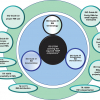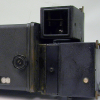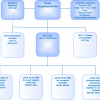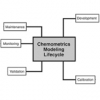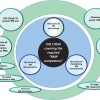Peter Jenks
the Jenks Partnership, Newhaven House, Junction Road, Alderbury, Salisbury, Wiltshire SP5 3AZ, UK
ISO 17025 has been with us now for 12 years and in some industry sectors it is getting hard to find a commercial laboratory offering chemical testing that is not accredited to ISO 17025 for some or all of its scope. In just 12 short years the importance of “quality management” to a laboratory has undergone a seismic shift.
First, a look back: where did ISO 17025 come from? Back in pre-history, well the early 1990s, ISO Guide 25, was the guide to quality systems for testing laboratories. The European Committee for Standardisation (CEN) published a standard on the operation and accreditation of laboratories EN 45001 which equated to ISO Guide 25 and in the UK UKAS issued M10, which was intended to define the criteria to be met by UKAS-accredited laboratories and encompassed all the requirements of the EN and ISO documents. In other parts of the world there were similar activities and it was agreed that all these similar, but subtly different documents should be brought together and include the main elements of ISO 9000.
In 1999 ISO published ISO 17025 and accreditation of testing and calibration laboratories to this new standard started. In 2005 a revised version was released, harmonising it with ISO9001–2000 which introduced a greater emphasis on the responsibilities of senior management together with an explicit requirements for continual improvement of the management system and communication with the customer.
Unlike many other ISO standards ISO 17025 forms the basis for accreditation by an Accreditation Body. Since the standard is about competence, accreditation should simply be a formal recognition by the accreditation body of a demonstration of that competence. To demonstrate that competence the laboratory must go through a formal validation procedure that normally requires input from external sources: certified reference materials, proficiency testing and technical assessment. All, at times, can cause the laboratory seeking accreditation considerable difficulty.
The adoption, sometimes mandatory, of ISO 17025 has resulted in an enormous growth in demand for certified reference materials (CRM) and proficiency testing (PT) services from accredited producers. That demand has in turn resulted in a new wave of accreditation of CRM producers to both ISO 17025 and ISO Guide 34 and, for PT, ISO 17025 plus ISO Guide 43. History is repeating itself as ISO Guide 43 and ISO 17025 are being combined into a new standard, ISO 17043: the first accreditations of PT providers to this new standard are expected in 2011 and it is anticipated that a similar fate will befall ISO Guide 34, and related guides: they will be merged with ISO 17025 to give “ISO 17034”.
Even with all this activity there are never enough CRMs and in some cases there can never be suitable CRMs. A good case in point is the accreditation of laboratories for the analysis of waste streams. To properly validate a method the CRM used should be matched for matrix and analytes. But what happens if the sample matrix is essentially unstable, such as a fat/protein rich waste from a meat processing factory? It is simply not possible to produce a CRM, based on such a matrix, that complies with the stability and homogeneity requirements of ISO Guide 34 and for the same reasons finding a PT sample is not possible. The lab Quality Manager is then faced with convincing the technical assessor from the Accreditation Service that their method is capable of accreditation. One may ask why try and accredit such a method? Increasingly the answer is because “Government” has put in place a regulation that demands all labs testing waste water are properly accredited. Unsurprisingly no one involved with this decision understood that the laws of physics, chemistry and biology care nothing for the wishes of a legislator.
Technical assessors are also a scarce resource. They are almost always specialists and retained by the accreditation body as a consultant. But increasingly I hear of accreditation plans being put on hold because it has proved impossible to find a suitable technical assessor that is completely neutral or because the lab finds it difficult to justify the costs charged by the technical assessor. In one case the candidate CRM producer had to put plans on hold for more than 12 months because the only available assessor that met the accreditation bodies requirements worked for a competitor. In another case the candidate lab is located on a relatively remote island that has no regular flights, visitors must arrive by sea. The island depends on fishing and wants to export to the EU, so must test the fish to ensure it meets EU requirements. The testing lab must be accredited to ISO 17025, but the lab must pay the costs of bringing the accrediting team from the UK to their island paradise for a three week stay almost 10,000 km from London.
If the growth of ISO 17025 accredited testing labs is to continue at its present rate it seems to this author that revisions to ISO 17025 will be needed to deal with the commercial and technical realities of CRM and PT production and accreditation bodies will have to increasingly take on the provision of technical assessment rather than relying on external specialist consultants. Challenges indeed!


